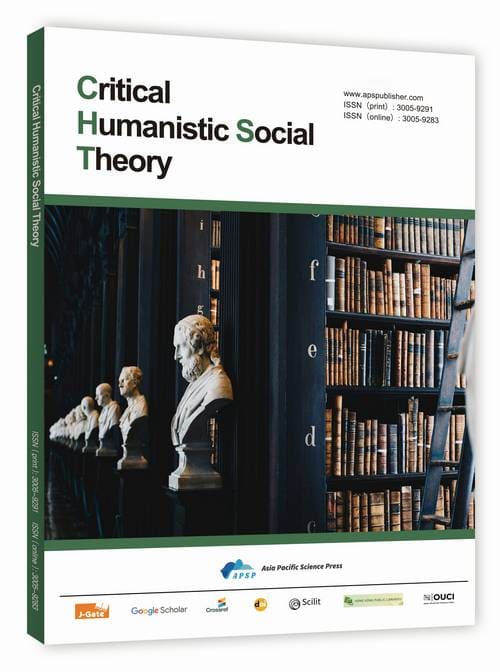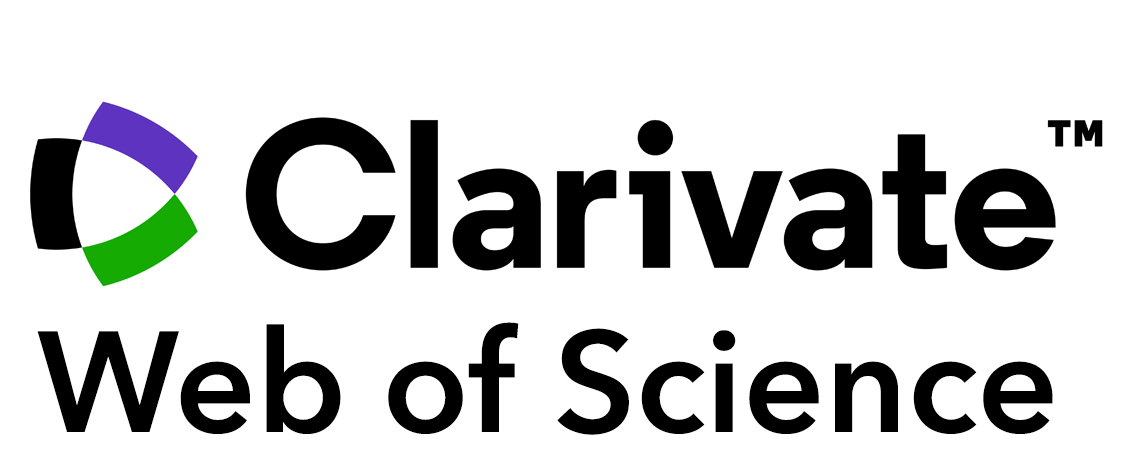Comprehending the Culture Picture Scroll of China:
A Case Study of Linguistic Elements in the Popular Song “Luochahai City”
DOI:
https://doi.org/10.62177/chst.v2i3.502Keywords:
Luochahai City, Chinese Culture, Linguistic elements, Chinese SocietyAbstract
This paper provides an in-depth analysis of the lyrics of the Chinese pop song Luochahai City, exploring how they reflect social phenomena and cultural values. The study emphasizes the integral connection between language and culture, asserting that analyzing song lyrics can offer valuable insights into different aspects of Chinese culture. A mixed-methods approach is employed, combining both qualitative and quantitative data analysis through the lens of narrative theory to identify cultural markers within the lyrics. These markers include Chinese characters, idiomatic phrases, distinctive expressions, and societal values.
Quantitative analysis is used to examine individual characters and idioms, investigating their contextual meanings and cultural significance. Meanwhile, qualitative analysis involves reviewing media commentary and insights from music industry professionals, which provide a broader perspective on the song’s impact.
The findings demonstrate that the lyrics function like a Chinese picture scroll, intertwining cultural and linguistic elements into a cohesive narrative that encourages deeper reflection on societal issues. In conclusion, the paper underscores the role of cultural elements in enriching the song’s meaning and fostering critical engagement with Chinese society, while suggesting future research directions that highlight the importance of lyric analysis in understanding culture.
Downloads
References
Angelica Galante (2020): Plurilingual and pluricultural competence (PPC) scale: the inseparability of language and culture, International Journal of Multilingualism, https://doi.org/10.1080/14790718.2020.1753747
Jeremy Wade Morris(2020, July-September ):Music Platforms and the Optimization of Culture,Social Media + Society, https://doi.org/10.1177/2056305120940690
Matthew R. Derooand Vaughn W. M. Watson(2020,June):“Air Breathe”:Songwriting as Literacy Practices of Remembrance,Journal of Literacy Research, https://doi.org/10.1177/1086296X20915518
April H. Bailey,Adina Williams,Andrei Cimpian(2022,April 1st):Based on billions of words on the internet, people = men,Science Advances, DOI:10.1126/sciadv.abm2463
GIGI LUK and ELLEN BIALYSTOK (2005): How iconic are Chinese characters?. Bilingualism:Language and Cognition, 8, pp 79-83 doi:10.1017/S1366728904002081
Gary Barkhuizen and Sal Consoli (2021):Pushing the edge in narrative inquiry. System, https://doi.org/10.1016/j.system.2021.102656
Laith Alzubaidi et al(2023):A survey on deep learning tools dealing with data scarcity: defnitions, challenges, solutions, tips, and applications,Journal of Big Data, https://doi.org/10.1186/s40537-023-00727-2
Richard J. Crisp et al.(2010):From imagery to intention: A dual route model of imagined contact effects. European Review of Social Psychology, https://doi:10.1080/10463283.2010.543312
Eni Julita Br Munthe et al(2022):AN ANALYSIS OF CONTEXTUAL MEANING IN BATAK TOBA SONGS LYRIC BY PUTRI SILITONGA: A CASE ON SEMANTICS.American Journal of Research in Humanities and Social Sciences.
Min-Yen Kan et al(2008):LyricAlly: Automatic Synchronization of Textual Lyrics to Acoustic Music Signals, IEEE TRANSACTIONS ON AUDIO, SPEECH, AND LANGUAGE PROCESSING, VOL. 16, NO. 2.
Annamaria Mesaros and Tuomas Virtanen(2010):Automatic Recognition of Lyrics in Singing,EURASIP Journal on Audio, Speech, and Music Processing, doi:10.1155/2010/546047
ChristopherVito(2015):Who said hip-hop was dead? The politics of hip-hop culture in Immortal Technique’s lyrics,International Journal of Cultural Studies,DOI: 10.1177/1367877914528529
ANDREW J. MOODY(2006):English in Japanese popular culture and J-Pop music,World Englishes, Vol. 25, No. 2, pp. 209–222
PAUL FRIEDRICH(2001):Lyric epiphany,Language in Society, Cambridge University Press
Sophie A. Booton et al(2021):The impact of mobile application features on children’s language and literacy learning: a systematic review,Computer Assisted Language Learning,doi:10.1080/09588221.2021.1930057
ANDREA BELTRAMA, et al(2023):Context, precision, and social perception: A sociopragmatic study,Language in Society, doi:10.1017=S004740452200024
Luca Carbone, Jonathan(2022):Sounds like meritocracy to my ears: exploring the link between inequality in popular music and personal culture,Information, Communication & Society, https://doi.org/10.1080/1369118X.2021.2020870
Michael E. W. Varnum, et al (2020):Why are song lyrics becoming simpler? a time series analysis of lyrical complexity in six decades of American popular music,PLoS ONE, https://doi.org/10.1371/journal.pone.0244576
Donghee Shin, et al (2022):The effects of cultural dimensions on algorithmic news: How do cultural value orientations affect how people perceive algorithms?Computers in Human Behavior, https://doi.org/10.1016/j.chb.2021.107007
Stella Aririguzoh(2022):Communication competencies, culture and SDGs: effective processes to cross-cultural communication, Humanities and Social Sciences Communications, https://doi.org/10.1057/s41599-022-01109-4
Violina P Rindova and Luis L Martins(2021):Futurescapes: Imagination and temporal reorganization in the design of strategic narratives,Strategic Organization, https://doi.org/10.1177/1476127021989787
Keith Allan(2007): The pragmatics of connotation,Journal of Pragmatics,doi:10.1016/j.pragma.2006.08.004
Steven Langsford, et al (2023):Constructing a 30‑item test for character amnesia in Chinese,Reading and Writing, https://doi.org/10.1007/s11145-023-10506-3
Benjamin Bruening(2019):Idioms, collocations, and structure Syntactic constraints on conventionalized expressions,Nat Lang Linguist Theory, https://doi.org/10.1007/s11049-019-09451-0
Francisco José Ruiz de Mendoza Ibáñez(2020):Understanding figures of speech: Dependency relations and organizational patterns,Language & Communication, https://doi.org/10.1016/j.langcom.2019.12.002
Dessart Laurence, Pitardi Valentina(2019):How stories generate consumer engagement: An exploratory study,Journal of Business Research,https://doi.org/10.1016/j.jbusres.2019.06.045
Li Wei & Zhu Hua(2019):Tranßcripting: playful subversion with Chinese characters,International Journal of Multilingualism, https://doi.org/10.1080/14790718.2019.1575834
Corinna Oschatz & Caroline Marker(2020):Long-term Persuasive Effects in Narrative Communication Research: A Meta-Analysis, Journal of Communication, https://doi.org/10.1093/joc/jqaa017
Joseph C. Nunes, et al(2014):The power of repetition: repetitive lyrics in a song increase processing fluency and drive market success,Journal of Consumer Psychology, https://doi.org/10.1016/j.jcps.2014.12.004
Beth Malory(2024):Polarized Discourses of Abortion in English: A Corpus-based Study of Semantic Prosody and Discursive Salience,Applied Linguistics, https://doi.org/10.1093/applin/amad042
Gianna Moscardo(2020):Stories and design in tourism,Annals of Tourism Research, https://doi.org/10.1016/j.annals.2020.102950
Alison Singer, et al(2022):A full semantic toolbox is essential for autism research and practice to thrive,Autism Research, DOI: 10.1002/aur.2876
Jingxia Li(2022):Emotion Expression in Modern Literary Appreciation: An Emotion-Based Analysis,Frontiers in Psychology, https://doi.org/10.3389/fpsyg.2022.923482
Mark Feng Teng and Danyang Zhang(2023):Vocabulary learning in a foreign language: multimedia input, sentence-writing task, and their combination,Applied Linguistics Review, https://doi.org/10.1515/applirev-2022-0160
Paul Dawson(2017):Delving into the Narratological "Toolbox": Concepts and Categories in Narrative Theory,Style, https://doi.org/10.1353/sty.2017.0016
Paul Ayodele Onanuga & Ayobami O. Onanuga(2020):Violence, Sexuality and
Youth Linguistic Behaviour: An Exploration of Contemporary Nigerian Youth Music,Contemporary Music Review, https://doi.org/10.1080/07494467.2020.1753478
Sharon Shavitt, Aaron J. Barnes(2019):Culture and the Consumer Journey,Journal of retailing, https://doi.org/10.1016/j.jretai.2019.11.009
Bryor Snefjella et al(2020):How emotion is learned: Semantic learning of novel words in emotional contexts,Journal of Memory and Language, https://doi.org/10.1016/j.jml.2020.104171
Joyce Oiwun Cheunga and Dezheng (William) Fengb(2019):Attitudinal meaning and social struggle in heavy metal song lyrics: A corpus-based analysis,Social Semiotics, https://doi.org/10.1080/10350330.2019.1601337
Liridona Gashi et al(2021):Making“bad trips”good: How users of psychedelics narratively transform challenging trips into valuable experiences, International Journal of Drug Policy, https://doi.org/10.1016/j.drugpo.2020.102997
Downloads
How to Cite
Issue
Section
License
Copyright (c) 2025 Wenxin Wan

This work is licensed under a Creative Commons Attribution-NonCommercial 4.0 International License.
DATE
Accepted: 2025-07-18
Published: 2025-08-01

















